A tennis ball and a cricket ball, both are stationary. To start motion in them :
a less force is required for the cricket ball than for the tennis ball
a less force is required for the tennis ball than for the cricket ball
same force is required for both the balls
nothing can be said.
The correct Answer is:B
To solve the question about starting motion in a tennis ball and a cricket ball, we will analyze the forces required to overcome their inertia based on their masses.
1. Identify the Objects: We have two objects - a tennis ball and a cricket ball. Both are initially stationary.
2. Understand the Concept of Inertia: According to Newton's First Law of Motion, an object at rest will remain at rest unless acted upon by an external force. The amount of force required to start moving an object depends on its mass (inertia).
3. Compare the Masses:
- A tennis ball is significantly lighter than a cricket ball.
- Therefore, the cricket ball has more mass and greater inertia compared to the tennis ball.
4. Determine the Force Required:
- Since the tennis ball has less mass, it requires less force to overcome its inertia and start moving.
- Conversely, the cricket ball, being heavier, requires more force to start moving.
5. Evaluate the Options:
- Option A: A less force is required for the cricket ball than the tennis ball - This is incorrect because the cricket ball is heavier.
- Option B: A less force is required for the tennis ball than the cricket ball - This is correct.
- Option C: The same force is required for both balls - This is incorrect as their masses differ.
- Option D: Nothing can be said - This is incorrect because we can conclude based on their masses.
6. Conclusion: The correct answer is Option B: A less force is required for the tennis ball than the cricket ball.
- A tennis ball is significantly lighter than a cricket ball.
- Therefore, the cricket ball has more mass and greater inertia compared to the tennis ball.
- Since the tennis ball has less mass, it requires less force to overcome its inertia and start moving.
- Conversely, the cricket ball, being heavier, requires more force to start moving.
- Option A: A less force is required for the cricket ball than the tennis ball - This is incorrect because the cricket ball is heavier.
- Option B: A less force is required for the tennis ball than the cricket ball - This is correct.
- Option C: The same force is required for both balls - This is incorrect as their masses differ.
- Option D: Nothing can be said - This is incorrect because we can conclude based on their masses.
Topper's Solved these Questions
- LAWS OF MOTIONBook:ICSEChapter:LAWS OF MOTIONExercise:EXERCISE - 3(C)
Explore 25 Videos
- LAWS OF MOTIONBook:ICSEChapter:LAWS OF MOTIONExercise:EXERCISE - 3(C) Multiple Choice type
Explore 4 Videos
- LAWS OF MOTIONBook:ICSEChapter:LAWS OF MOTIONExercise:EXERCISE - 3(B)
Explore 26 Videos
- ICSE ANNUAL EXAMINATION -2020Book:ICSEChapter:ICSE ANNUAL EXAMINATION -2020Exercise:SECTION-II
Explore 45 Videos
- LIGHTBook:ICSEChapter:LIGHTExercise:TOPIC 2 Spherical Mirrors (4 Marks Questions )
Explore 9 Videos
Similar Questions
A spinning cricket ball takes a curved path, Explain.
View SolutionThree identical balls, ball I, ball II and ball III are placed on a smooth floor on a straight line at the separation of 10m between balls as shown in figure. Initially balls are stationary. But I is given velocity of 10m/s towards ball II, collision between balls I and II is inelastic with coefficient of restitution 0.5 but collision between balls II and III is perfectly elastic. What is the time interval between two consecutive collisions between ball I and II?
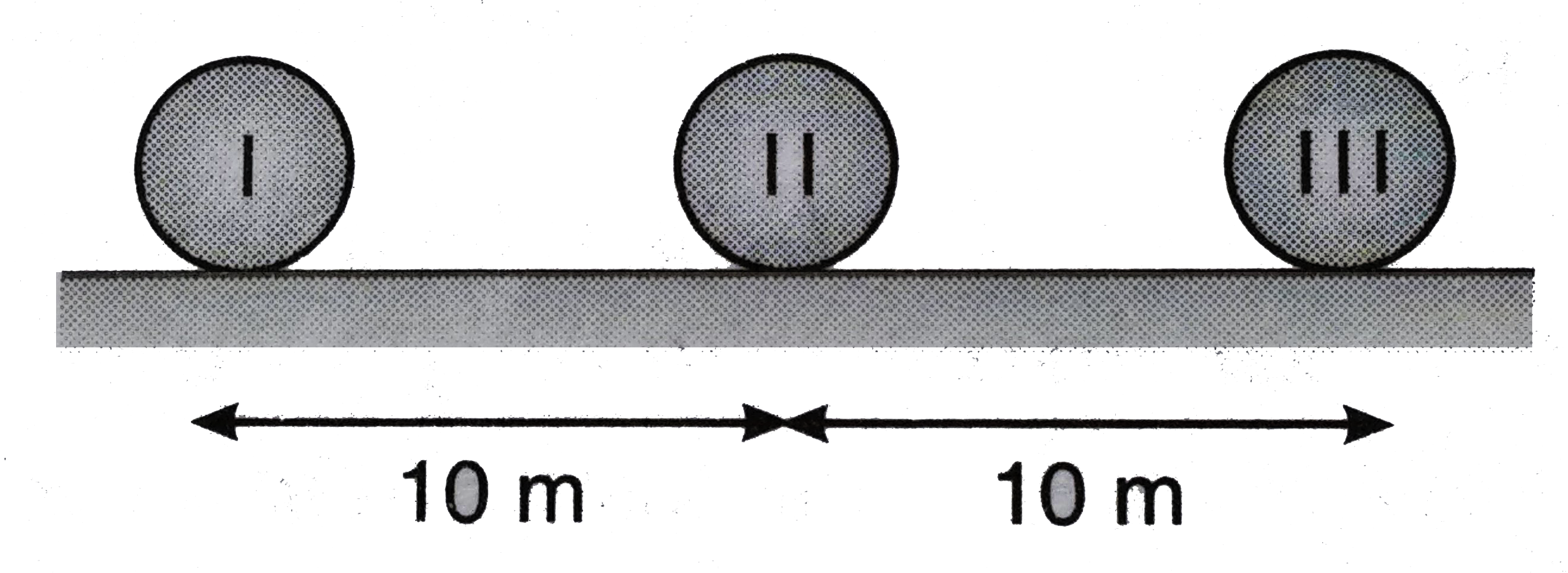
View SolutionThree identical balls, ball I, ball II and ball III are placed on a smooth floor on a straight line at the separation of 10m between balls as shown in figure. Initially balls are stationary. But I is given velocity of 10m/s towards ball II, collision between balls I and II is inelastic with coefficient of restitution 0.5 but collision between balls II and III is perfectly elastic. What is the time interval between two consecutive collisions between ball I and II?

View SolutionConsider an oblique elastic collision between a moving ball and a stationary ball of the same mass. Both the balls move with the same speed after the collision. After the collision, the angle between the directions of motion of two balls is x degree. Find the value of x.
View Solution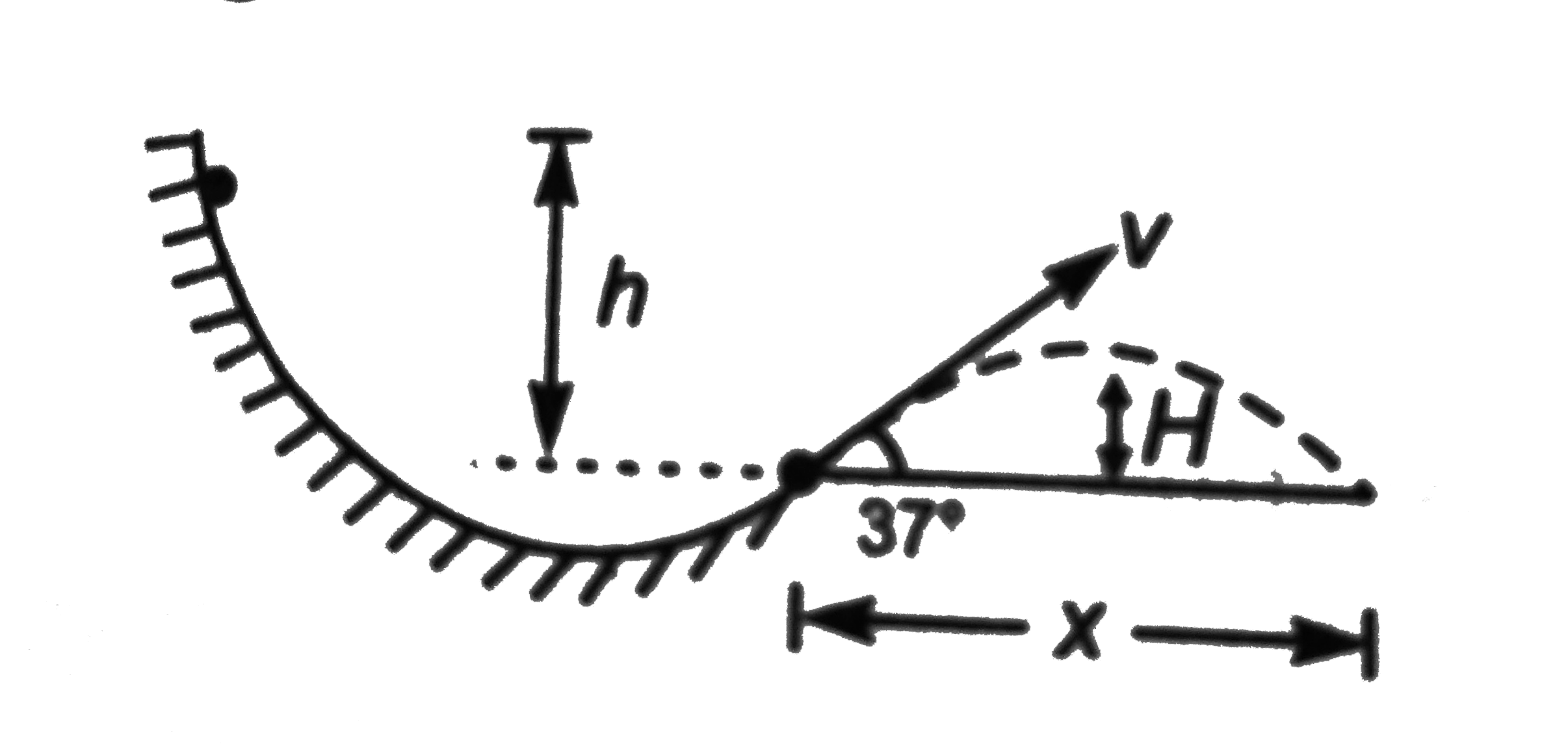
A tennis ball, starting from rest, rolls down the hill in the drawing. At the end of the hill the ball becomes airborne, leaving at an angle of 37∘ with respect to the ground treat the ball as a thin-walled spherical shell.
Q. Maximum height reached by ball H above ground is
View Solution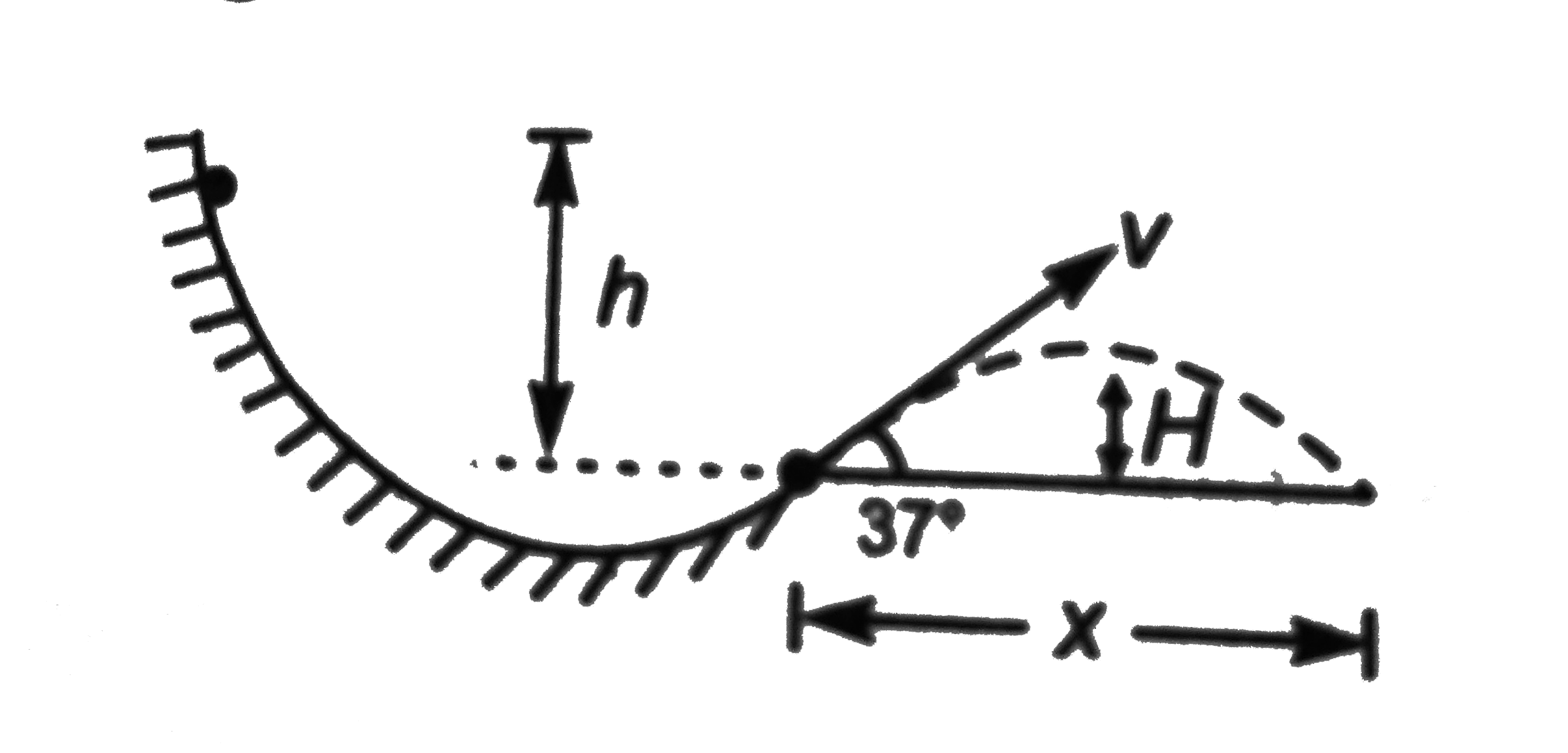
A tennis ball, starting from rest, rolls down the hill in the drawing. At the end of the hill the ball becomes airborne, leaving at an angle of 37∘ with respect to the ground treat the ball as a thin-walled spherical shell.
Q. Range x of the ball is
View Solution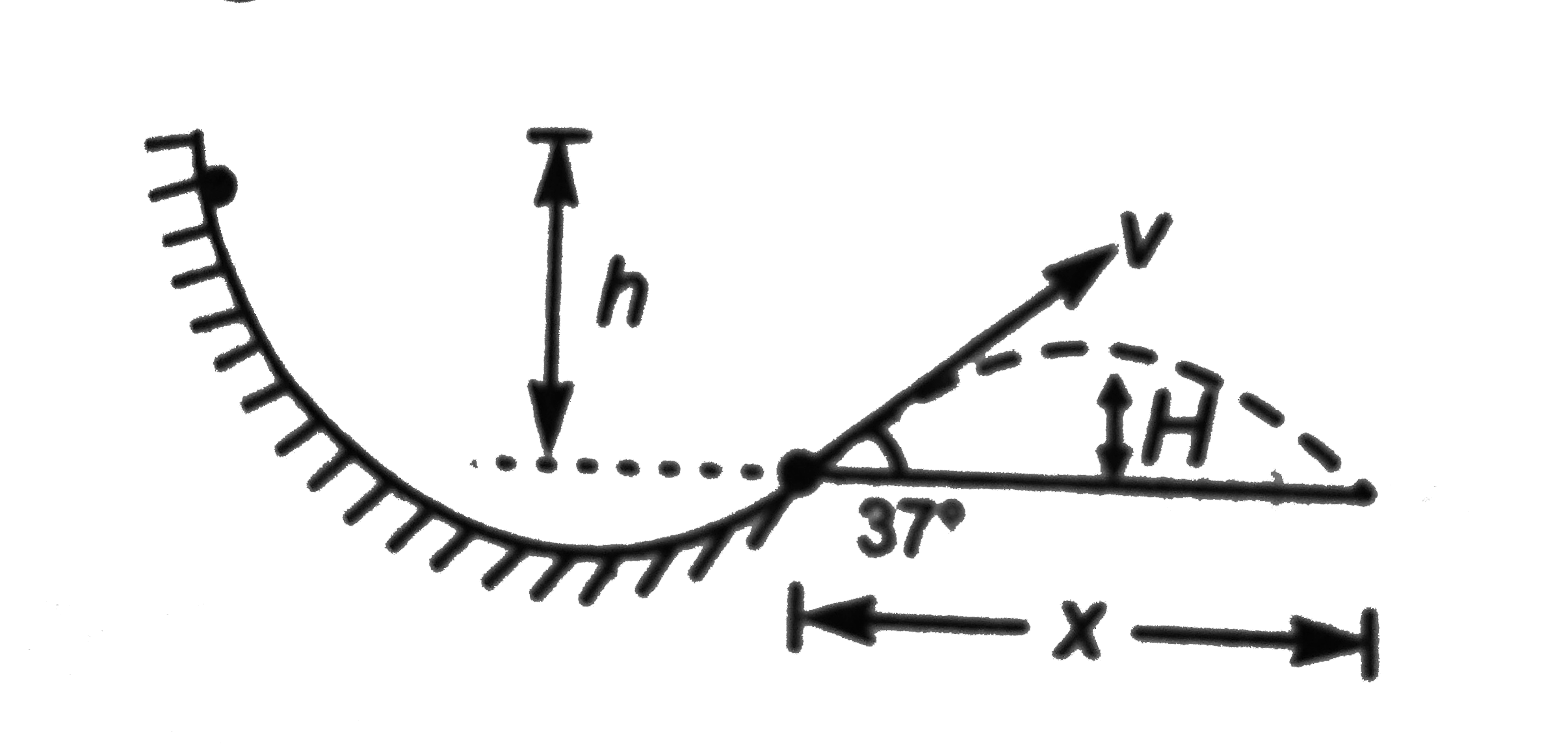
A tennis ball, starting from rest, rolls down the hill in the drawing. At the end of the hill the ball becomes airborne, leaving at an angle of 37∘ with respect to the ground treat the ball as a thin-walled spherical shell.
Q. The velocity of projection v is
View SolutionAssertion: A ball is released on a rough ground in the condition shown in figure. it will start pure rolling after some time towards left side.
Reason: Friction will convert the pure rotational motion of the ball into pure rolling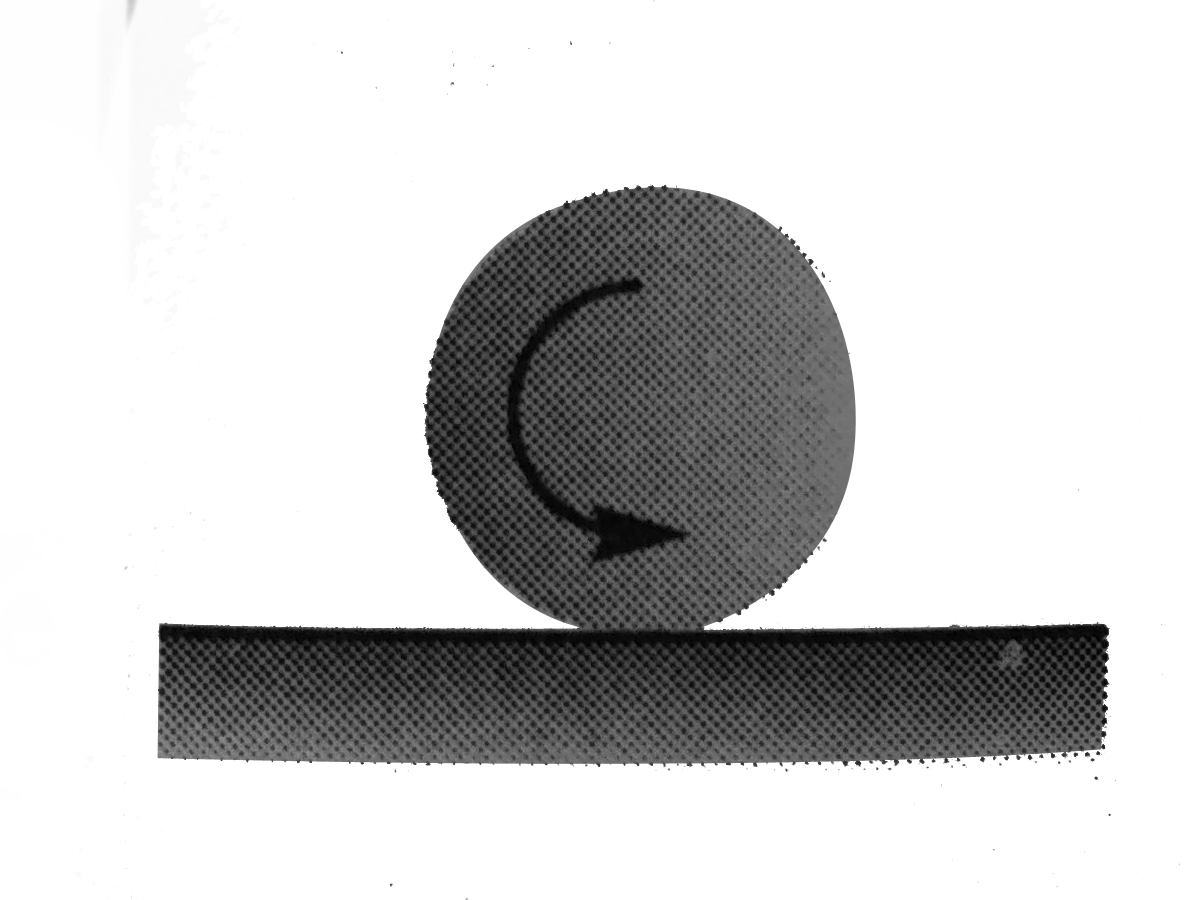
View Solutionconsider the acceleration velocity and displacement of a tennis ball as it falls to the ground and bouces back. Derections of which of these changes in the process
View SolutionA ball moving along a straight line collides elastically with another stationary ball of the same mass. At the moment of collision, the angle between the straight line passing through the centres of the balls and the direction of tr initial motion of the striking ball is θ, find the fraction of the kinetic energy of the striking ball converted into potential energy at the moment of the maximum deformation.
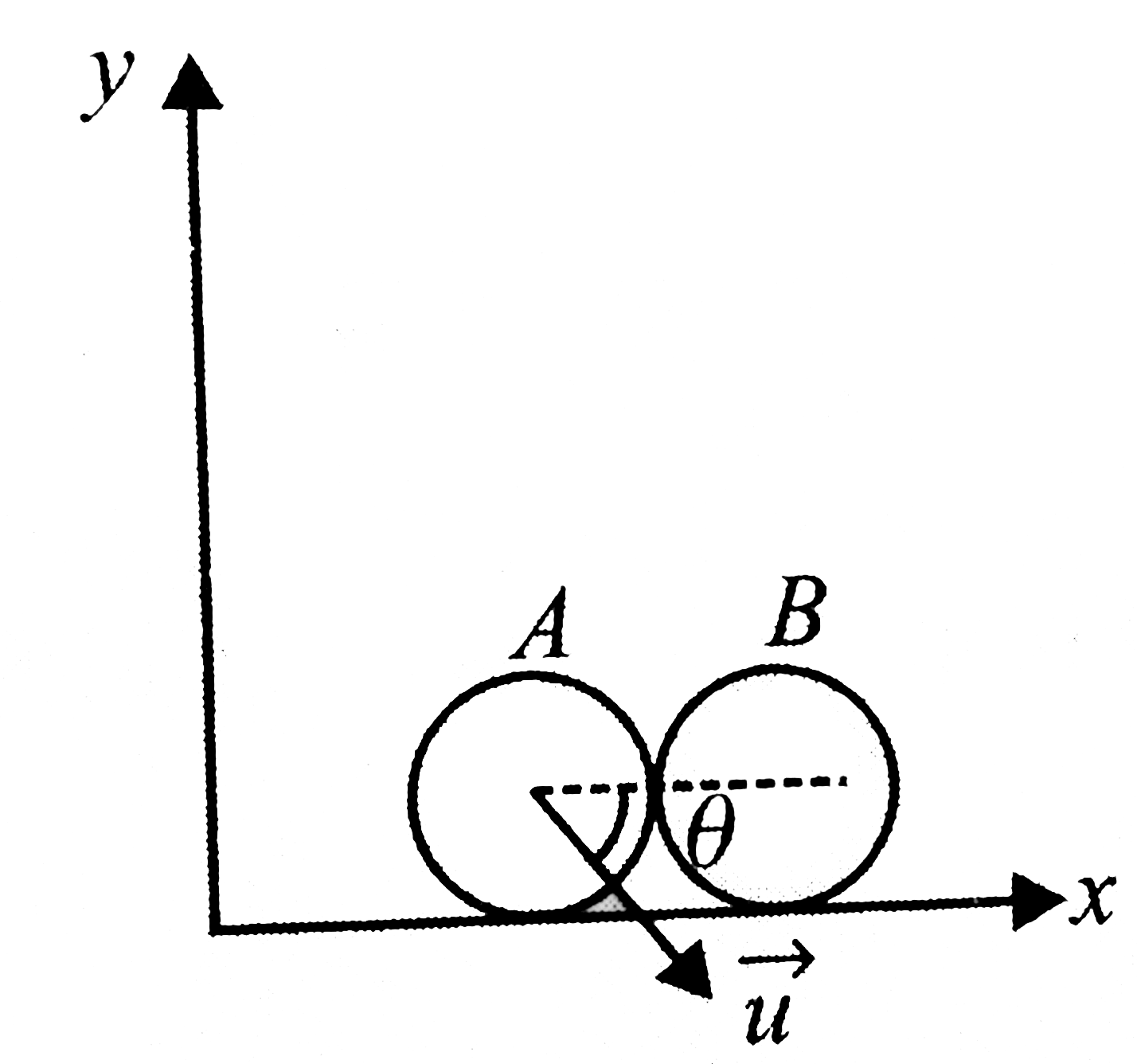
View Solution
